Planning your first trekking tour can cause stress, frustration, and tears to escalate at a high, uncontrollable frequency. Okay, it might not be that dramatic, but planning a trek requires plenty of attention to detail. You need to know the route, trail conditions, weather patterns, and safety procedures to deal with any possible dangers. Daunting? Yes. But it’s possible to work around it by booking a guided or self-guided tour that has been meticulously planned by experienced outdoor enthusiast. If you’re new to the walking tour experience, you’ll find everything you need to know about pre-planned trekking holidays below.
Trekking tour difficulty assessment
Find available, thrilling trekking tours for all levels, not just hardcore adventure enthusiasts. Did we bold and underline that sentence to dramatically highlight that you don’t need to be hiking steep inclines every weekend to go on a trekking tour? 100 percent.
The beautiful thing about partaking in a walking holiday is that they can be personalized to meet your needs. And if not, you’ll find adventures spanning all levels.
How do we rank our tours?
10Adventures assigns a difficulty rating to each of our trekking tours using a standard set of criteria for consistency. Most tours marked “easy” have little incline and gentle terrain, all while travelling deep into remote settings, either embedded in nature or backcountry culture.
Level 1 tours fall in sync with families, those with mobility challenges, and anyone seeking enchanting lookout points without wiping off too much sweat.
Level 2 usually increases to 3-5 hours daily spent on the trail, but often avoids tricky terrain. Anyone new to trekking or just getting back into it after time away will thrive at these two levels.
Meanwhile, moderate-ranking tours (level 3) align best with trekkers who already possess some hiking muscles. Some level 3 tours carve deep into the wild, requiring more equipment. Familiarity with this style of trip is often recommended.
Levels 4 and 5 often require acclimation, steep inclines, and challenging terrain requiring a range of equipment, and a higher fitness level is advised.
Although some bucket-list treks may fall under the moderate or challenging categories, it’s possible to customize your trip. Don’t be afraid to reach out and ask!
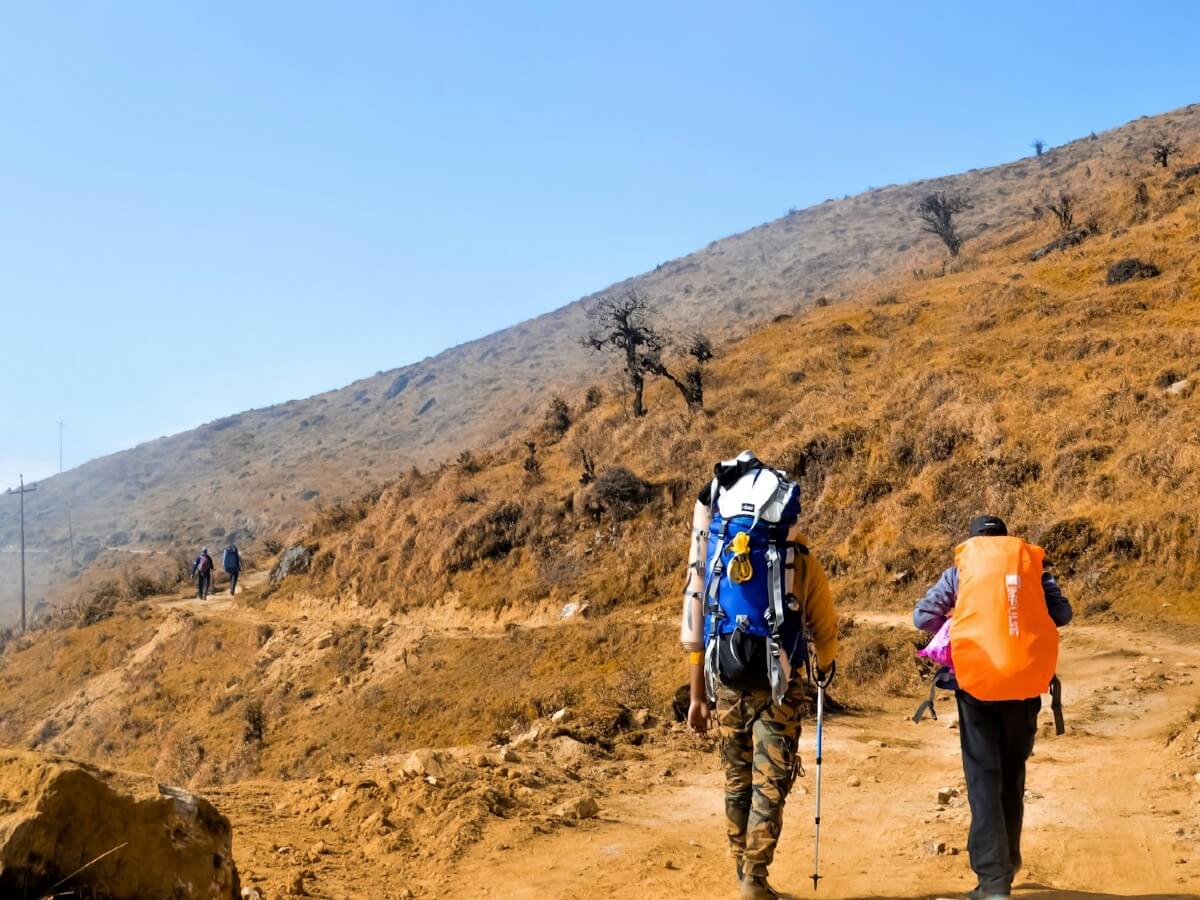
Top trekking destinations
The world boasts countless short and long-distance hiking adventures, so there’s no shortage of treks twisting along mountain slopes, adjacent to the swirling sea, or connecting village to village that are waiting to be explored. To search for your ideal active holiday, head to the 10Adventures tours page, click on your destination, preferred difficulty, and duration to narrow the options.
Discover epic tours falling under the “easy” level across Europe. These tours seamlessly fuse culture, adventure, and backcountry beauty. Austria tours are a great option for anyone looking at planning their first trekking tour.
More “moderate” tours will open more exploring options in Europe, South America, Canada and the United States. Yosemite National Park makes for an unreal “moderate” trekking destination. Some Machu Picchu treks also fall under level 3, but keep in mind that altitude will start to come into play with these higher elevation adventures.
Add intense climate, deep mountain wanders in the Himalayas and other Asian destinations to the “hard” and “very hard” categories. Nepal tours are an epic pick for seasoned hikers.
Side note: you can always train to meet the needs of your trek. If you booked a ‘level 3’ trek, but consider yourself a ‘level 2’, you can always follow a fitness regime to sculpt those hiking muscles. Everything is possible!
Other popular hiking regions
Still not sure where to go? Take a look at some of the most popular trekking holidays all over the world. The following information—ideally—should help highlight which region suits your style.
French Alps, France
Explore lush, green valleys punctuated by snow-capped peaks in the French Alps. You might think this sounds like every other epic mountain region in the world, but you’ll also find charming alpine villages, rewarding French cuisine, and a sweet fusion of exploration and relaxation.
Fantastic trekking tour in the French Alps: You can’t mention trekking tours in the French Alps without mentioning the greatest hiking tour of them all—Tour du Mont Blanc. Circumnavigate the tallest mountain in Western Europe, passing through three countries en route: France, Switzerland, and Italy. Don’t be turned off by the difficulty rank for the Tour du Mont Blanc linked above—you can find other Tour du Mont Blanc options that dip in difficulty and span fewer days.
Swiss Alps, Switzerland
In general, Switzerland boasts incredible mountainous scenery, similar to the French Alps. If you walk the entire Tour du Mont Blanc, you’ll also pass through a pocket of Switzerland. Revel in an alpine setting and Swiss villages tucked between gigantic peaks when you tackle treks in the Swiss Alps.
Excellent trekking tour in the Swiss Alps: The 8-Day Matterhorn Trekking Tour travels around the Matterhorn, an almost-perfect peak shaped like a pyramid. The Matterhorn straddles Italy and Switzerland, with most of it located in the latter.
Dolomites, Italy
Discover all the typical wonders that come with exploring mountainous, alpine havens in the Dolomites, Italy. You’ll find more tour options on the difficulty spectrum in this region!
Awesome trekking tour in the Dolomites: Embark on the breathtaking Self-Guided Hiking in the Dolomites Tour, where you’ll get a taste of Italy’s backcountry—a literal taste. Munch on cheese in the thick of the wild or enjoy glasses of wine. You’ll catch a glimpse of the quiet of the mountains instead of the boom of the regular tourist attractions.
Patagonia, Argentina and Chile
Argentina may boast one of the most epic natural landscapes in the world with Patagonia, which is an otherworldly outdoor wonderland. You’ll definitely want to visit places like Los Glaciares National Park! In Chile, Torres Del Paine National Park is a must-visit, thanks to its striking blue icebergs and glaciers.
Two Incredible trekking tours in Patagonia, Chile: The W Trek in Torres Del Paine Tour encompasses the highlight reel of nature’s beauty that can be found in Chilean Patagonia: glaciers, valleys, and lakes, all surrounded by towering peaks. You’ll spend your evenings resting in cozy camps or Refugio dormitories. The other remarkable tour in Chile is the Self-Guided O Circuit Trek in Torres Del Paine. You’ll catch similar scenery to what’s mentioned above as well as the Southern Patagonian Ice Field!
Other trekking holidays worth checking out are the Guided Laugavegur Hut-to-Hut Trekking Tour in Iceland, where a fusion of untouched scenery and varied landscapes will easily delight and the Camino de Santiago, a famous pilgrimage that cuts through northern Spain. Keep in mind that Camino de Santiago is more of a long-distance walk rather than a trek.
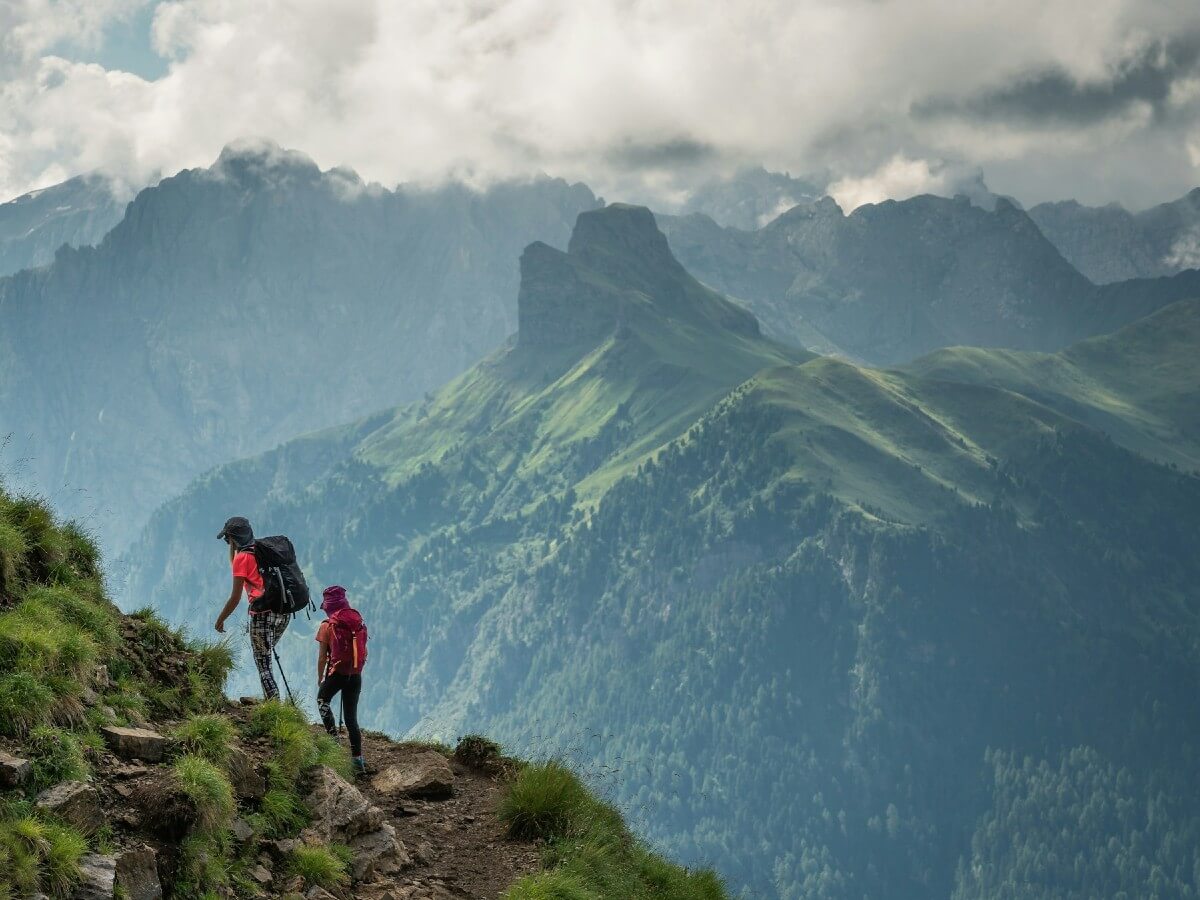
The difference between guided and self-guided trekking tours
The main difference between guided and self-guided trekking tours is that guides know safety protocols, hidden destinations far from tourists, and the route and terrain by heart. It’s easy to relax when you follow a guide, and as such, you’ll find that more remote treks with tricky navigation include a guide.
Self-guided trips on the other hand often follow more well-known trails. But don’t worry. Self-guided tours still boast the much-needed off-the-grid, wild hiking experience. And you’ll never feel like you’re left to your own devices. You will have 24/7 support from the local team should you need it!
Self-guided supports
An unreal attribute of self-guided trekking tours is that you don’t have to plan anything (or worry), but you can still explore in solitude. A self-guided tour comes with GPS, route notes, 24/7 phone support, and a behind-the-scenes team—a group of people at your beck and call throughout your escapade! Some self-guided tours may arrange luggage transportation so you can carry a daypack and leave your heavier belongings behind. Do note that this varies per tour!
Tips for your first trekking tour
Some tips to consider before heading out on your first trekking tour:
- Invest in new shoes: Where do you spend the most time when you’re trekking? In the trees? The answer to this horrible riddle: your feet. With this in mind, it’s essential to invest in high-quality shoes. And spend time in your new shoes before embarking on your tour. You don’t want to wallow in blister-infused pain while a highlight reel of natural beauty passes you on the trail.
- Eat food: Check your itinerary for food and snack provisions throughout your daily ventures. It’s always important to stow away an extra granola bar, chocolate, or trail mix in case your blood sugar dips or you need an energy boost. Your tour may provide more than enough, but it’s good to double-check and purchase additional items beforehand in case!
- Test out different terrain: Depending on your trek, it’s always a good idea to practice walking on different terrain. One day, you could go for a run. Another time, you could hike on a gravel path. Next venture, you could try steeper terrain with loose rocks. It might also be beneficial to tackle a hike in the rain.
- Start training: Find workout suggestions below!
- Test out your gear: Wear your new gear in different weather conditions. You might find that your raincoat isn’t waterproof or the grip on your shoes isn’t as stable as it should be.
Physical preparation for your first trek
Want to level up your fitness levels for your first trek? It might be a good idea to strengthen your hiking muscles and joints. We suggest sifting through your desired itinerary and planning your physical preparation around the requirements. Trekking can be particularly tough on your knees.
Some tips to avoid shooting knee pain when walking downhill:
-take small steps downhill
-walk heel-to-toe, activating your thigh muscles to alleviate pressure on your knees
You likely won’t experience knee pain when on flat ground or ascending. Poles can help!
In general, you can build knee strength by biking a lot beforehand. Investing in trekking poles is also essential! Exercises or movements that target your calf muscles, quads, and hamstrings may also relieve knee pain.
If you’re going on a multi-day trek, load your backpack with most of your gear and practice step-ups, find stairs, or hit the trail if possible. The ultimate goal is to build core, back, and leg muscles while getting your heart used to pumping at elevated beats per minute.
Still have no idea where to begin? The Uphill Athlete Training Program provides a platform to train for specific outdoor journeys, including treks. Richard Campbell, the Founder of 10Adventures, is a firm believer in the program and describes his experience training with Uphill Athlete when discussing his approach to training for summer hiking adventures. He found that it helped his posture, core, and overall strength!
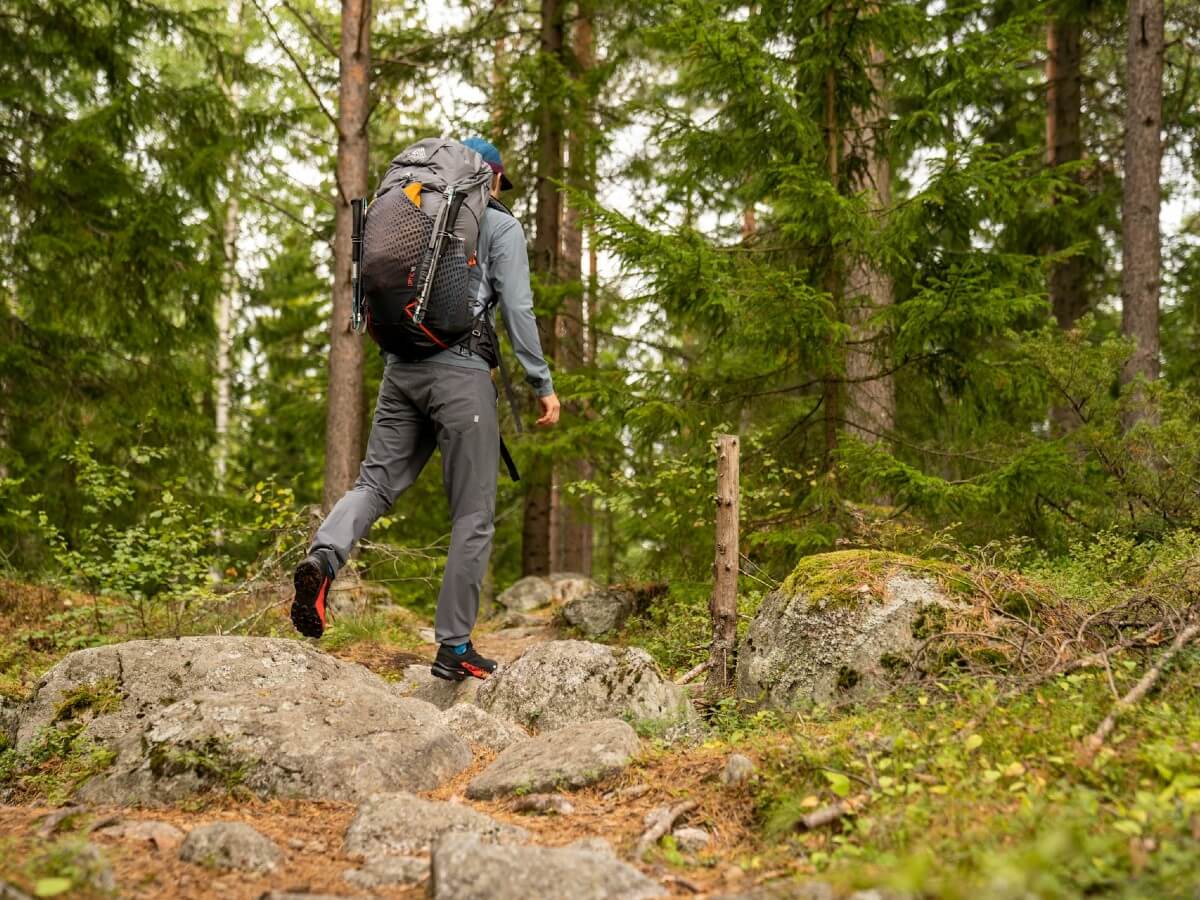
Packing list for your first trekking tour
Packing for a pre-planned trekking tour can look different than preparing for your own self-created route. Unlike going on a backpacking trip where you need to carry all of your own gear, it’s common for tour operators to provide the major pieces of equipment, such as tents and sleeping gear (if needed), trail navigation devices, technical gear, food, and emergency kits; especially for guided adventures.
Furthermore, many multi-day treks have the luxury of staying in hotels, meaning most of this gear will be completely redundant. Even still, it never hurts to sift through a packing list to get an idea of the types of gear you may need for a comfortable experience. You can check out this article on what you need to pack for when going backpacking, but generally speaking, your packing list for a trekking tour will look like the following:
- Backpack
- Comfortable hiking boots
- Sleeping bag (tour dependant)
- Food and snacks
- Water bottle
- Clothing suitable for the weather
- Emergency and repair kits
- Supplies for hygiene
- Headlamp or flashlight
Keep in mind that this list is for a backpacking adventure. A 3-5-hour hike-a-day tour with evenings in hotels or cities will eliminate necessities like the tent, a big backpack (a day bag will be fine), sleeping bag/pad, food (just snacks), and kitchen and hygiene supplies.
Lastly, remember that every tour has different packing requirements! For example, what you need may vary if you’re doing a hut-to-hut walking holiday, a tenting trek, going international, or staying in your home country.
The Tour du Mont Packing List provides excellent examples of what to bring along for a trekking tour in the French Alps.
Other notable benefits to going on your first trekking tour
Exploring the outdoors on foot will unlock a spectacle of emotions and memories. Think of the surreal settings you’ll travel by, punctuated by glittering seascapes or mountains (or both!), and the sense of achievement you’ll revel in every single day. There’s also something magical about jetting off to another country brimmed with rugged landscapes: it’s risky, it’s exciting, it’s an adventure.
Removing yourself from the stressors of everyday life and taking the leap to go somewhere new will undoubtedly expedite personal growth. Furthermore, these adventures have the power to open up your mind and improve your mental health, providing a much-needed escape that is hard to find anywhere else!
Plan your Next Tour
When all is said and done, you’ll crave the thrill of breaking your routine, prompting a need… a want to book yet another tour. You’ll be hooked! Now that you know you can tackle a trek, why not try a cycling tour next? Or perhaps a multisport adventure? There are so many options to choose from when planning an active holiday, you might just want to try them all!
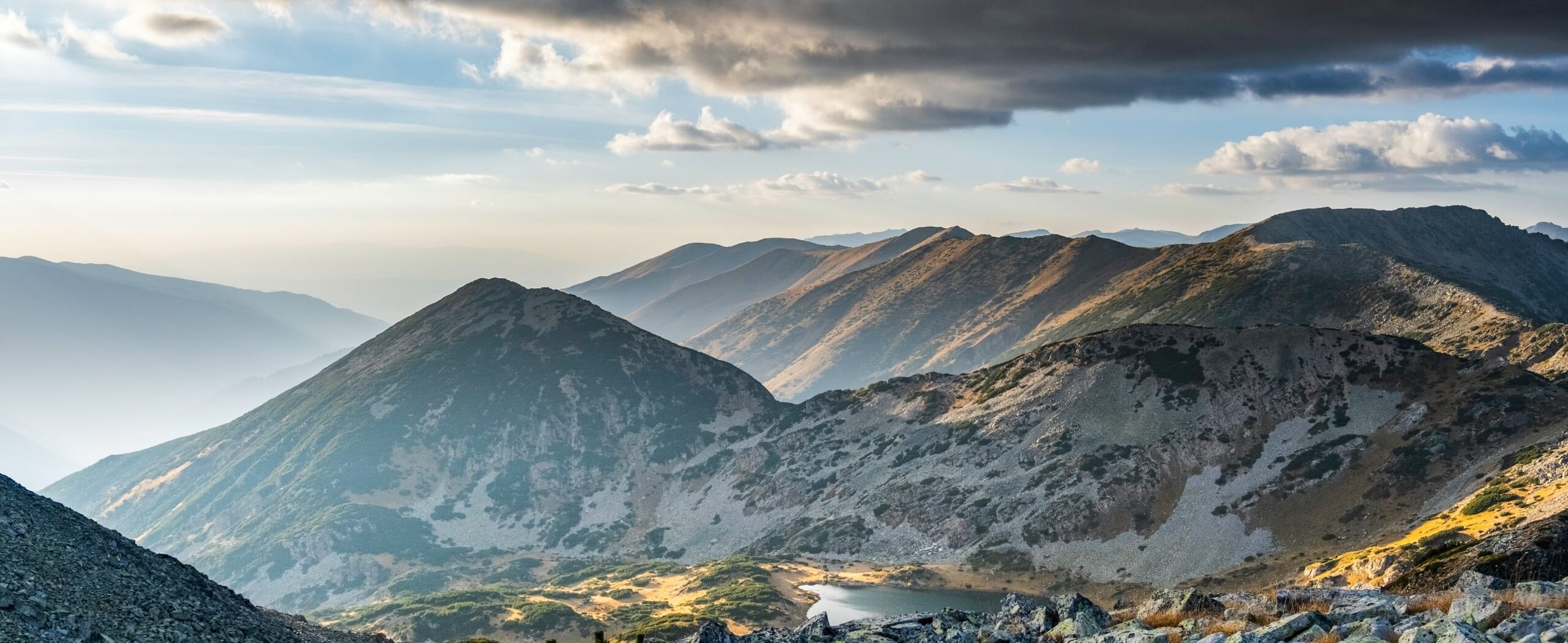
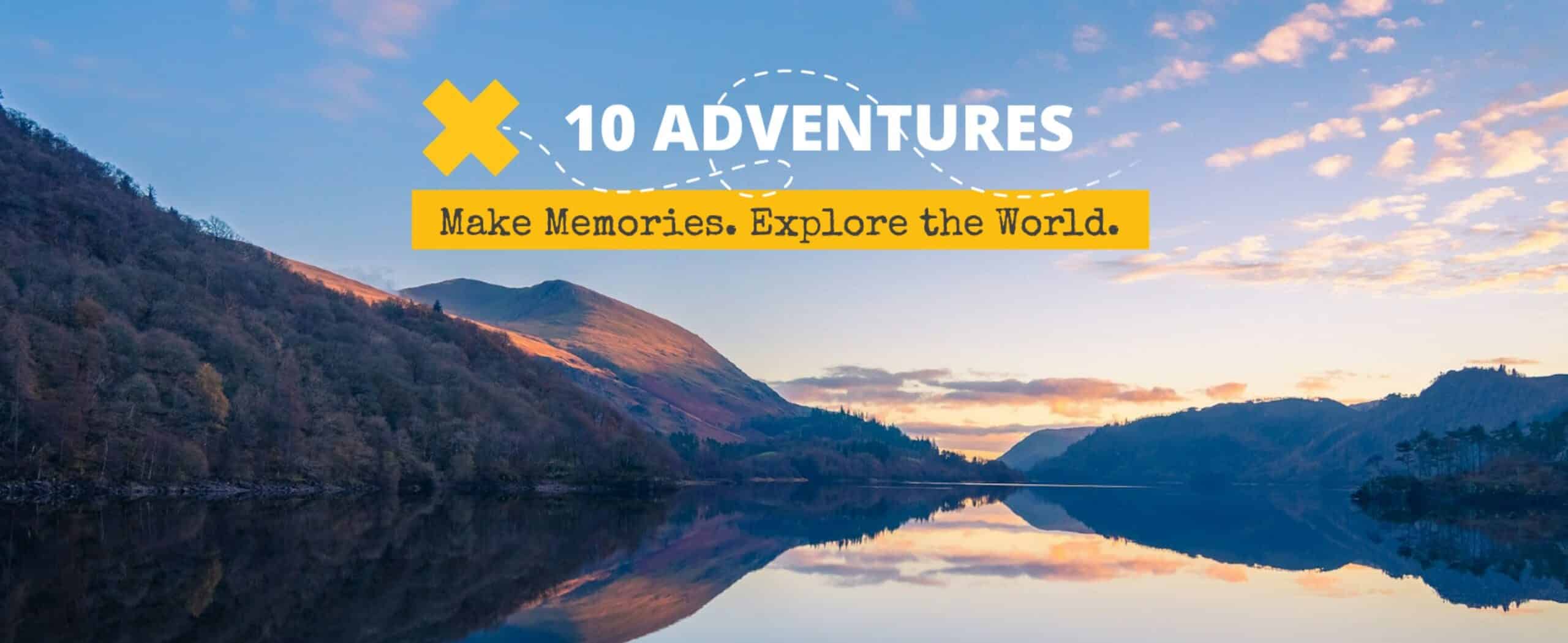

Comments